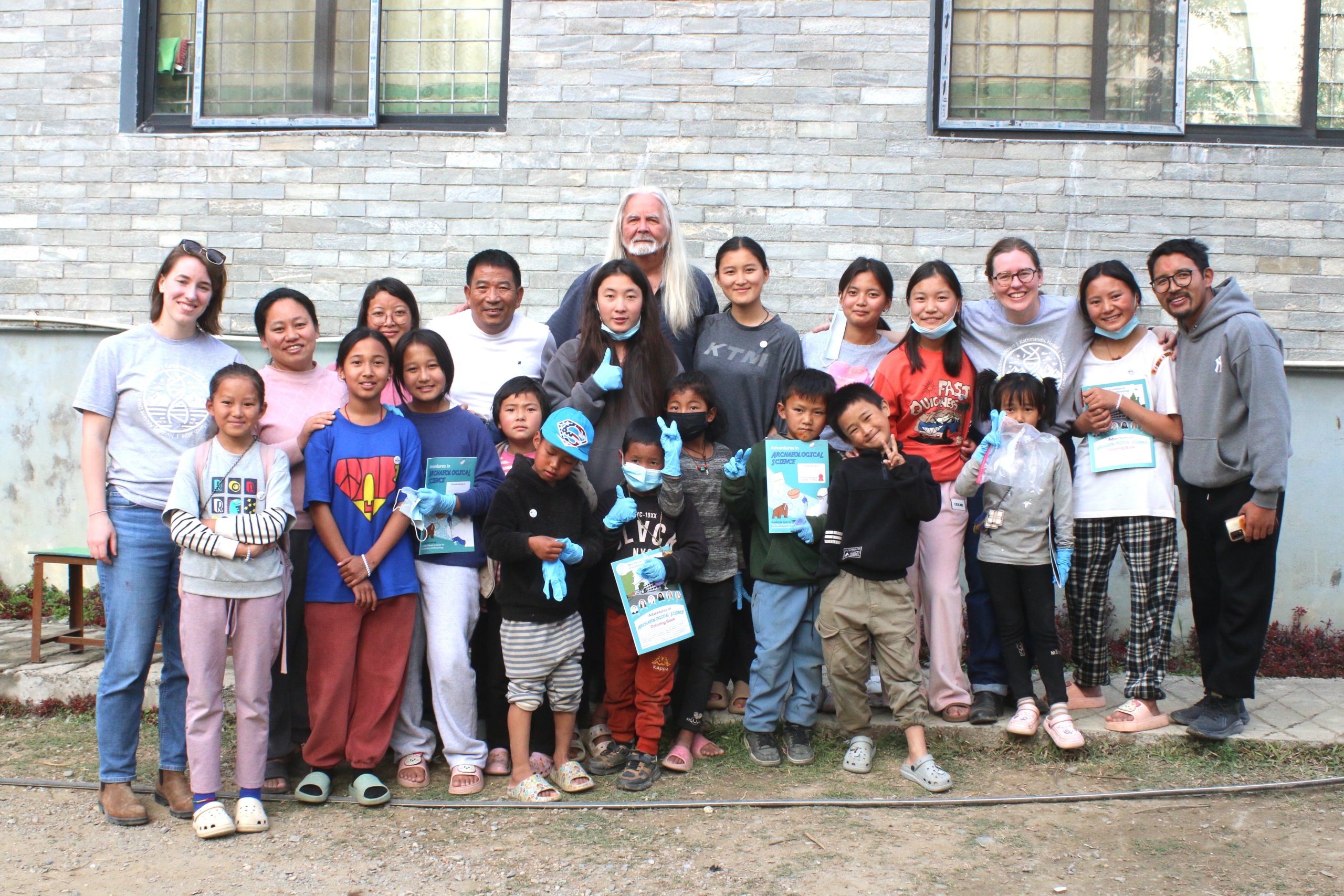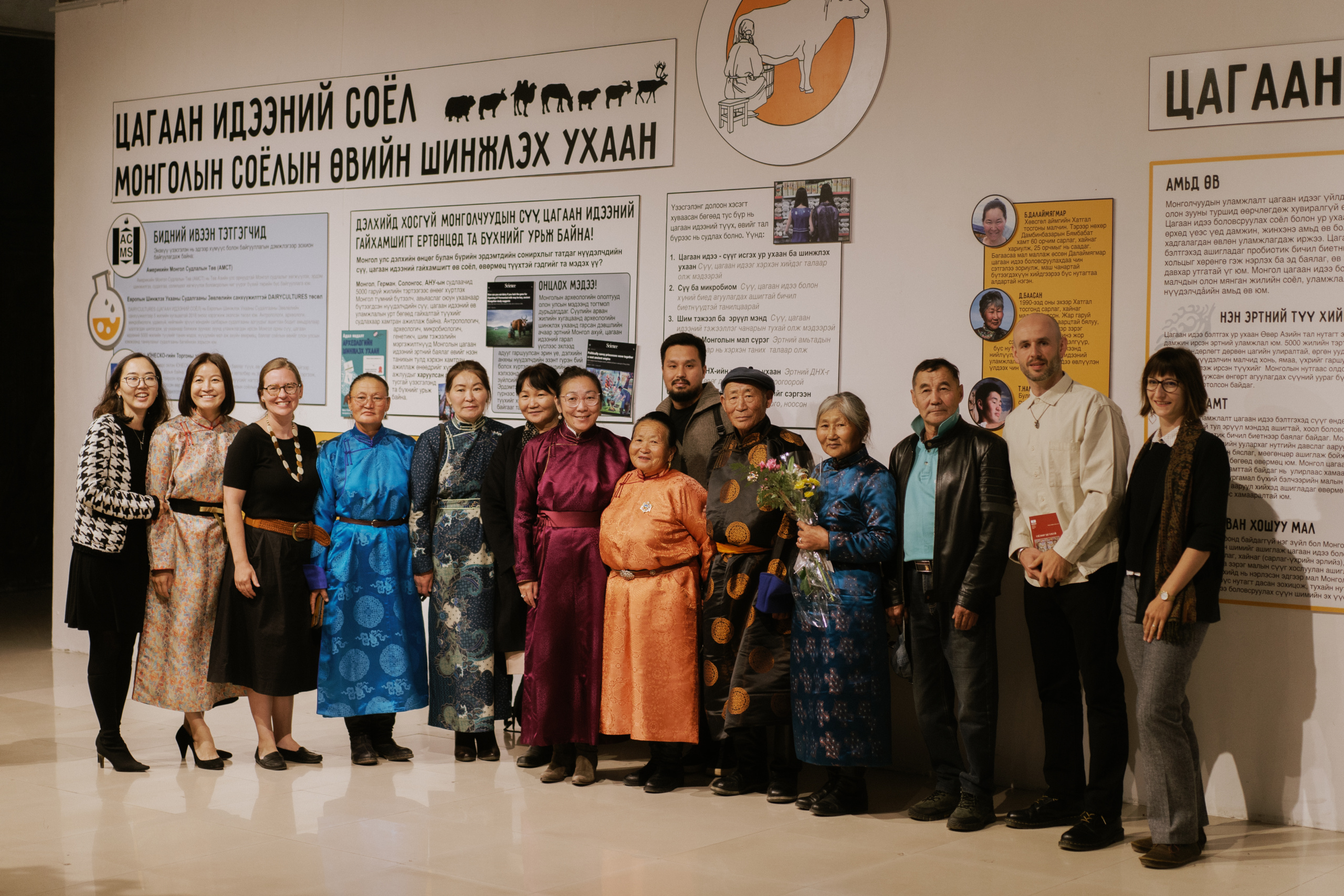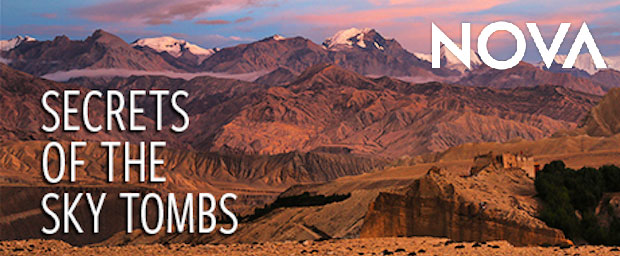Human Migration and Adaptation in Extreme Environments
Humans are both adaptive and inventive, and these skills have allowed humans to migrate across the globe and colonize nearly every region on earth, from the formidable Himalayas on the roof of the world to the vast and desolate grasslands of the Eurasian Steppe. Genetic and cultural adaptations accompanied many of these migrations, and millennia of social and biological interactions have produced the diverse populations of the modern world. Working backwards from the present and incorporating valuable data from ancient genomes, we seek to understand the processes of gene-culture evolution that enabled the prehistoric colonization of some of the world’s most challenging and extreme environments.
Peopling of the Himalayas and High Altitude Adaptation
Since prehistory, the Himalayan mountain range has presented a formidable barrier to population migration, while at the same time its transverse valleys have long served as conduits for trade and exchange. This project seeks to reconstruct the population history of the Himalayan arc by generating genome-wide genetic data from prehistoric ACA populations.
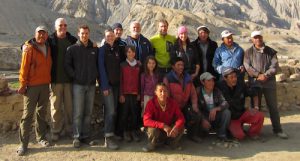
Since prehistory, the Himalayan mountain range has presented a formidable barrier to population migration, while at the same time its transverse valleys have long served as conduits for trade and exchange. Yet, despite the long-term economic and cultural importance of Himalayan trade routes, little is known about the region’s peopling and early population history.
Focusing on the Annapurna Conservation Area (ACA) of Nepal, this project seeks to reconstruct the population history of the Himalayan arc by generating genome-wide genetic data from prehistoric ACA individuals dating to three distinct cultural periods ranging in time from the earliest known human settlements (ca. 3150 BP) to the establishment of the Tibetan Empire (ca. 1250 BP). Considering the pivotal role played by the Himalayan high transverse valleys in connecting far-flung Eurasian populations, as well as the environmental challenges the Himalayas impose on their inhabitants (e.g., extreme cold stress and hypoxia), this study has deep implications for reconstructing human prehistoric migration history, understanding biocultural adaptation to local environments, and informing future genetic archaeology studies.
Prehistory of the Eurasian Steppe and the Rise of Dairy Pastoralism
In contrast to the barrier imposed by the Himalayan mountains, the Eurasian steppe offered a means of rapid transportation and migration across vast distances. With the advent of the Bronze Age, Indo-European pastoralists rapidly expanded onto the Western Steppe, but little is known about the eastern limits of this migration. This project investigates the population history of the Eastern Steppe and its relationship to the Indo-European steppe populations west of the Altai.
 The steppe belt that extends across Eurasia from Hungary to Manchuria was the primary corridor of Late Neolithic and Bronze Age migrations that reshaped the genetics of Europe and Asia, dispersed the Indo-European language family, and spread new technologies, such as horseback riding and wheeled vehicles. Beginning in the Late Neolithic period, a new and highly mobile pastoralist societies formed on the Western Steppe, of which the Yamnaya culture is genetically representative. These steppe herders expanded both westwards, contributing to the Corded Ware culture of Eastern and Central Europe, and eastwards, contributing to the mobile pastoralist Afanasievo, Sintashta, and Andronovo cultures. The eastern extent of this Western steppe herder expansion is not well defined, but Bronze Age populations as far east as Mongolia share a similar pastoralist economy focused on sheep, goats, cattle, and horses. This project investigates the genetic relationships between Bronze Age Western and Eastern Steppe peoples through genome-wide analysis of skeletal material spanning 6,000 years of time – from the pre-Bronze to Medieval Age periods throughout Inner Asia.
The steppe belt that extends across Eurasia from Hungary to Manchuria was the primary corridor of Late Neolithic and Bronze Age migrations that reshaped the genetics of Europe and Asia, dispersed the Indo-European language family, and spread new technologies, such as horseback riding and wheeled vehicles. Beginning in the Late Neolithic period, a new and highly mobile pastoralist societies formed on the Western Steppe, of which the Yamnaya culture is genetically representative. These steppe herders expanded both westwards, contributing to the Corded Ware culture of Eastern and Central Europe, and eastwards, contributing to the mobile pastoralist Afanasievo, Sintashta, and Andronovo cultures. The eastern extent of this Western steppe herder expansion is not well defined, but Bronze Age populations as far east as Mongolia share a similar pastoralist economy focused on sheep, goats, cattle, and horses. This project investigates the genetic relationships between Bronze Age Western and Eastern Steppe peoples through genome-wide analysis of skeletal material spanning 6,000 years of time – from the pre-Bronze to Medieval Age periods throughout Inner Asia.
Population history of Peru and the high Andes
The colonization of South America and the prehistoric relationships between lowland and highland populations remain poorly understood. This project seeks to reconstruct the population history of the Peru by generating whole genome data from prehistoric lowland and highland populations.
The peopling of the Andean highlands above 2500m in elevation was a complex process that included cultural, biological and genetic adaptations. However, how and when people first arrived in Peru and colonized these high elevation environments remains poorly understood. In this study, we are generating genome-wide genetic data from highland and lowland Peruvian populations spanning the past 7000 years to investigate the colonization history of the highlands, potential selection of high altitude adaptive alleles, and the genetic impact of colonialism on highland and lowland populations.
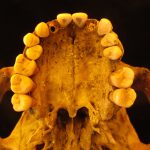
Related Publications
Liu C, Witonsky D, Ringbauer H, Hagan R, Hofman C, Patel N, Stahl R, Novembre J, Aldenderfer M, Warinner C, Di Rienzo A, Jeong C. Ancient genomes from the Himalayas illuminate the genetic history of Tibetans and their Tibeto-Burman speaking neighbors. Nature Communications 13:1203. https://doi.org/10.1038/s41467-022-28827-2
Zhang F, Chao N, Scott A, Fu Q, Bjorn R, Fan L, Wei D, Li W, Han J, Hu X, Ruan Q, Abuduresule I, Dong G, Li C, Gao S, Xu Y, Wen S, Zhu H, Zhou H, Krause J*, Warinner C*, Jeong C*, Cui Y*. (2021) The genomic origins of the Bronze Age Tarim mummies. Nature, https://www.nature.com/articles/s41586-021-04052-7
Taylor W, Pruvost M, Posth C, Rendu W, Krajcarz M, Brancaleoni G, Spengler R, Hermes T†, Schiavinato S, Hodgins G, Stahl R, Abdykanova A, Saltanat A, Fedorowicz S, Orlando L, Douka K, Krivoshapkin A, Jeong C, Warinner C, Shnaider S. (2021) Evidence for the early dispersal of Near Eastern domesticates into high mountain Central Asia. Nature Human Behavior. https://doi.org/10.1038/s41562-021-01083-y
Wilkin S, Ventresca Miller A, Taylor WTT, Miller BK, Hagan RW, Bleasdale M, Scott A, Gankhuyg S, Ramsøe A, Trachsel C, Nanni P, Grossmann J, Orlando L, Horton M, Stockhammer P, Myagmar E, Boivin N, Warinner C, Hendy J.(2020) Dairy pastoralism sustained Eastern Eurasian steppe populations for 5000 years. Nature Ecology and Evolution 4:346-355. https://doi.org/10.1038/s41559-020-1120-y.
- Article translation in Mongolian: Сүү, цагаан идээ голлосон мал аж ахуй Зүүн Евразийн тал нутгийн ард түмний амь зуулгыг 5000 жилийн турш залгуулжээ
Jeong C, Wilkin S, Amgalantugs T, Bouwman A, Taylor W, Bromage S, Tsolmon S, Hagan R, Trachsel C, Grossman J, Littleton J, Makarewicz C, Krigbaum J, Burri M, Irmer F, Scott A, Davaasambuu G, Wright J, Myagmar E, Boivin N, Robbeets M, Rühli F, Krause J, Frohlich B, Hendy J, Warinner C. (2018) Bronze Age population dynamics and the rise of dairy pastoralism on the eastern Eurasian steppe. Proceedings of the National Academy of Sciences USA. DOI: 10.1073/pnas.1813608115.
Lindo J, Haas R, Hofman C, Apata M, Moraga M, Verdugo R, Watson JT, Llave CV, Witonsky D, Vargas Pacheco E, Villena M, Soria R, Beall C, Warinner C, Novembre J, Aldenderfer M, Di Rienzo A. (2018) The genetic prehistory of the Andean highlands 7,000 years BP through European contact. Science Advances 4(11): eaau4921. DOI: 10.1126/sciadv.aau4921.
Jeong C, Ozga AT, Witonsky D, Malmstrom H, Edlund H, Hofman CA, Hagan RW, Jakobsson M, Lewis CM, Aldenderfer M, Di Rienzo A, Warinner C*. Long-term genetic stability and a high altitude East Asian origin for the peoples of the high valleys of the Himalayan arc. Proceedings of the National Academy of Sciences USA 113(27):7485-7490.
Learn More
2024 Nepal Outreach Photo Album, check out our photo album documenting our university symposia and classroom visits in March 2024
2023 Dairy Cultures Museum Exhibit, check out our virtual exhibit of “Dairy Cultures: The Science of Mongolian Heritage,” co-sponsored by the Natural History of Mongolia and the American Center for Mongolian Studies. You can also view our behind-the-scenes Dairy Cultures photo album of the making of the exhibit!
“Microbes on the Move: A Travelling Conference,” by the DairyCultures team
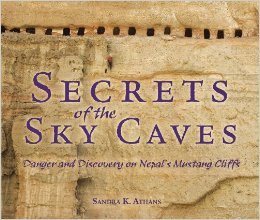
“Secrets of the Sky Caves: Danger and Discovery on Nepal’s Mustang Cliffs,” by Sandra Athans. Nonfiction book for grades 4-8 that features our 2012 archaeological expedition to Nepal. Read the National Science Teacher Association (NSTA) review here.
Philanthropy

This project parners with with Liesl Clark of Magic Yetis Children’s Libraries, who has been active in creating libraries since 2008 in a number of communities in Upper Mustang, including the villages of Choser, Kagbeni, Samdzong, and Tsarang.
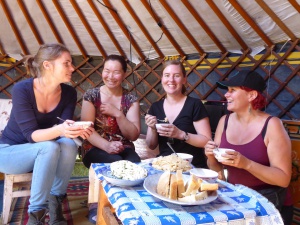 This project partners with with Charlotte Vad of the Khovsgol Dairy Project, who works to support Sarlagiin Saikhan Khishig, a cooperative of traditional nomadic dairy pastoralists in the Khovsgol Nuur region of northern Mongolia.
This project partners with with Charlotte Vad of the Khovsgol Dairy Project, who works to support Sarlagiin Saikhan Khishig, a cooperative of traditional nomadic dairy pastoralists in the Khovsgol Nuur region of northern Mongolia.

